- Home
- Brian Lumley
Necroscope 4: Deadspeak
Necroscope 4: Deadspeak Read online
TOR BOOKS BY BRIAN LUMLEY
The House of Doors
Necroscope
Necroscope II: Vamphyri!
Necroscope III: The Source
Necroscope IV: Deadspeak
This is a work of fiction. All the characters and events portrayed in this book are fictitious, and any resemblance to real people or events is purely coincidental.
NECROSCOPE IV; DEADSPEAK
Copyright © 1990 by Brian Lumley
All rights reserved, including the right to reproduce this book, or portions thereof, in any form.
Cover art by Bob Eggleton
A Tor Book
Published by Tom Doherty Associates. LLC
175 Fifth Avenue
New York. NY 10010
www.tor.com
Tor® is a registered trademark of Tom Doberty Associates, LLC.
ISBN: 0-812-33032-2
First edition: May 1990
Printed in the United States of America
20 19 18 17 16 15 14 13 12 11 10
For Stavros Dendrinos
PROLOGUE
Harry Keogh:
A Résumé and Chronology
One: Necroscope
CHRISTENED HARRY “SNAITH” IN EDINBURGH, 1957, Harry is the son of a psychic sensitive mother, Mary Keogh (who is herself the daughter of a “gifted” expatriate Russian lady) and Gerald Snaith, a banker. Harry’s father dies of a stroke the following year, and in the winter of 1960 his mother marries again, this time choosing for a husband a Russian by the name of Viktor Shukshin. Like Mary’s mother before him, Shukshin has fled the USSR a supposed “dissident”, which perhaps accounts for Mary’s initial attraction to him in what will soon become an unmitigated mismatch.
Winter of 1963: Harry’s mother is murdered by Shukshin at Bonnyrig outside Edinburgh, where he drowns her under the ice of a frozen river. He alleges that while skating she crashed through a thin crust and was washed away; there was nothing he could do to save her; he is “distraught, almost out of his mind with grief and horror”. Mary Keogh’s body is never found; Shukshin inherits her isolated Bonnyrig house and the not inconsiderable monies left to her by her first husband.
Within six months the infant Harry (now Harry “Keogh”) has gone to live with an uncle and his wife at Harden on the north-east coast of England. The arrangement is more than satisfactory to Shukshin, who could never stand the child.
Harry commences schooling with the roughneck children of the colliery village. A dreamy, introspective sort of child, he is a loner, develops few friendships (with fellow pupils, at any rate) and thus falls easy prey to bullying and the like. And as he grows towards his teens, so his daydreaming spirit, psychic insight and instincts lead him into further conflict with his teachers. But he is not lacking in grit—on the contrary.
Harry’s problem is that he has inherited his maternal forebears” mediumistic talents, and that they are developed (and still developing) in him to an extraordinary degree. He has no requirement for “real” friends as such, because the many friends he already has are more than sufficient and willing to supply his needs. As to who these friends are: they are the myriad dead in their graves!
Up against the school bully, Harry defeats him with the telepathic assistance of an ex-ex-Army physical training instructor; a man who, before the fall from sea cliffs which killed him, was expert in many areas of self-defence. Punished with mathematical homework, Harry receives help from an ex-Headmaster of the school; but in this he almost gives himself away. His current math’s teacher is the son of Harry’s coach who lies “at rest” in Harden Cemetery, and as such he very nearly recognizes his father’s hand in Harry’s work.
In 1969 Harry passes examinations to gain entry into a Technical College at West Hartlepool, a few miles down the coast, and in the course of the next five years until the end of his formal (and orthodox) education, does his best to tone down use of his talents and extraordinary skills in an attempt to prove himself a “normal, average student”—except in one field. Knowing that he will soon need to support himself, he has taken to writing; even by the time he finishes school he has seen several short pieces of fiction in print. His tutor is a man once moderately famous for his vivid short stories—who has been dead since 1947. But this is just the beginning; under a pseudonym and before he is nineteen, Harry has already written his first full-length novel, Diary of a Seventeenth-Century Rake. While falling short of the best-seller lists, still the book does very well. It is not so much a sensation for its storyline as for its amazing historical authenticity … until one considers the qualifications of Harry’s co-author and collaborator: namely, a 17th-Century Rake, shot dead by an outraged husband in 1672!
Summer of 1976. In a few months Harry will be nineteen. He has his own unassuming top-floor flat in an old three-storey house on the coast road out of Hartlepool towards Sunderland. Perhaps typically, the house stands opposite one of the town’s oldest graveyards … Harry is never short of friends to talk to. What’s more, and now that his talent as a Necroscope has developed to its full, he can converse with exanimate persons even over great distances. He needs only to be introduced or to have spoken to one of the teeming dead, and thereafter can always seek him out again. With Harry, however, it’s a matter of common decency that he physically go to see them: that is, to attend them at their gravesides. He does not believe in “shouting” at his friends.
In their turn (and in return for his friendship) Harry’s dead people love him. He is their pharos, the one shining light in their eternal darkness. He brings hope where none has ever before existed; he is their single window, their observatory on a world they had thought left behind and gone forever. For contrary to the beliefs of the living, death is not The End but a transition to incorporeality, immobility. The flesh may be weak and corruptible, but mind and will go on. Great artists, when they die, continue to visualize magnificent canvases, pictures they can never paint; architects plan fantastic, faultless, continent-spanning cities, which can never be built; scientists follow through the research they commenced in life but never had time to complete or perfect. Except that now, through Harry Keogh, they may contact one another and (perhaps more importantly) even obtain knowledge of the corporeal world. And so, while they would never deliberately burden him, all the trials and tribulations of Harry’s countless dead friends are his, and his troubles are theirs. And Harry does have troubles.
At his flat in Hartlepool, when he is not working, Harry entertains his childhood sweetheart, Brenda, who will shortly fall pregnant and become his wife. But as his worldly scope widens so a shadow from the past grows into an obsession. Harry dreams and daydreams of his poor murdered mother, and time and again in his darkest nightmares revisits the frozen river where she died before her time. Finally he resolves to take revenge on Viktor Shukshin, his stepfather.
In this, as in all things, he has the blessing of the dead. Murder is a crime they cannot tolerate; knowing the darkness of death, anyone who deliberately takes life is an abhorrence to them!
Winter of 1976 and Harry goes to see Shukshin, confronting him with evidence of his guilt. His stepfather is plainly dangerous, even deranged, and Harry suspects he’ll now try to kill him, too. In January of 1977 he gives him the opportunity. They skate on the river together, but when Shukshin moves in for the kill Harry is prepared. His plan goes wrong, however; they both fall through the ice and emerge together by the riverbank. The Russian has the strength of a madman and will surely drown his stepson … But no, for Harry’s mother rises from her watery grave to drag Shukshin down!
And Harry has discovered a new talent; or rather, he now knows how far the dead will go in order to protect him—knows that in fact they will ris
e from their graves for him!
Harry’s talent has not gone unnoticed: a top-secret British Intelligence organization, E-Branch (“E” for ESP), and its Soviet counterpart are both aware of his powers. He is no sooner approached to join the British organization than its head is killed, taken out by the Romanian spy and necromancer Boris Dragosani. A ghoul, Dragosani rips open the dead to steal their secrets right out of their blood and guts; by butchering the top man in E-Branch (INTESP) he now knows all the secrets of the British espers.
Harry vows to track him down and even the score, and the teeming dead offer their assistance. Of course they do, for even they are not safe from a man who violates corpses! What Harry and the dead don’t know is that Dragosani has been infected with vampirism: he has the vampire egg of Thibor Ferenczy inside him, growing there, gradually changing him and taking control. More, Dragosani has murdered a colleague, Max Batu the Mongol, in order to steal the secret of his killing eye. He can now kill at a glance!
Time is short and Harry must follow Dragosani back to the USSR—to Soviet E-Branch headquarters at the Chateau Bronnitsy, where the vampire is now Supremo—and there kill him. But how? Harry is no spy.
A British precog (an agent with the ability to scan vague details of the future) has foreseen Harry’s involvement not only with vampires but also in connection with the twisted figure 8 sigil of the Möbius Strip. To get to Dragosani he must first understand the Möbius connection. Here at least Harry is on familiar ground; for August Ferdinand Möbius has been dead since 1868, and the dead will do anything for Harry Keogh.
In Leipzig Harry visits Möbius’s grave and discovers the long-expired mathematician and astronomer at work on his space-time equations. What he did in life he continues, undisturbed, to do in death; and in the course of a century he has reduced the physical universe to a set of mathematical symbols. He knows how to bend space-time and ride his Möbius Strip out to the stars! Teleportation: an easy route into the Chateau Bronnitsy—or anywhere else, for that matter. Fine, but all Harry has is an intuitive grasp of math’s—and he certainly doesn’t have a hundred years! Still, he has to start somewhere.
For days Möbius instructs Harry, until his pupil is sure that the answer lies right here, just an inch beyond his grasp. He only needs a spur, and …
The East German GREPO (Grenz Polizei) have their eye on Harry. On the orders of Dragosani they try to arrest him in the Leipzig graveyard—and this is the spur he needs. Suddenly Möbius’s equations are no longer meaningless figures and symbols: they are a doorway into the strange immaterial universe of the Möbius Continuum! Harry conjures a Möbius door and escapes from the GREPO trap; by trial and error he learns how to use this weird and until now entirely conjectural parallel universe; eventually he projects himself into the grounds of Soviet E-Branch HQ.
Against the armoured might of the Chateau Bronnitsy, Harry’s task seems nigh impossible: he needs allies. And he finds them. The chateau’s grounds are waterlogged, peaty, white under the crisp snow of a Russian winter—but not frozen. And down in the peat, preserved through four centuries since a time when Moscow was sacked by a band of Crimean Tartars, the remains of that butchered band stir and begin to rise up!
With his zombie army Harry advances into the chateau, destroys its defences, seeks out and kills Dragosani and his vampire tenant. In the fight he too is killed; his body dies; but in the last moment his mind, his will, transfers to the metaphysical Möbius Continuum.
And riding the Möbius Strip into future time, Harry’s id is absorbed into the unformed infant mentality … of his own son!
Two: Wamphyri!
AUGUST 1977. DRAWN TO HARRY JR.’S ALL-ABSORBING MIND like an iron filing to a magnet, like a mote in a whirlpool, the Harry Keogh identity is in danger of being entirely subsumed, dislocated, wiped clean. As the child’s perceptions expand, how much of his father’s id will be left? Will anything at all of Harry Sr. remain?
Harry’s one avenue of freedom lies in the Möbius Continuum. He can still use it at will—but only when his infant son is asleep, and only as an incorporeal entity. That’s Harry’s big problem now: the fact that he doesn’t have a body. And another is this: that while exploring the infinity of the future timestream, he has noted among the myriad blue life-threads of Mankind a scarlet thread—a vampire in our midst. And worse, the thread crosses young Harry’s in the very close future!
Harry investigates. (He is incorporeal, but so are the dead; he can still communicate with them and they are still in his debt.) In September 1977 he speaks to the spirit of Thibor Ferenczy—no longer undead but truly extinct, a vampire no more—where his tomb keeps watch on the cruciform hills under the Carpatii Meridionali; and to Thibor’s “father”, Faethor Ferenczy, where he died in a World War II bombing raid on Ploiesti, towards Bucharest, where even today the ruins lie overrun with weeds and brambles.
Even dead, vampires are devious, the worst liars imaginable; even dead they tempt, taunt, terrorize if they can. But Harry has nothing to lose and Thibor has much to gain. With one exception, Harry Keogh is Thibor’s last remaining contact with a world he once planned to rule. One exception, yes …
In 1959 the vampire had “infected” a pregnant woman. Using the arts of the Wamphyri, he had touched and tainted her foetal male child—and willed it that one day this man as yet unborn would remember him and return to the cruciform hills in search of his “true” father.
And now it is 1977 and Yulian Bodescu, not yet eighteen years old, is a strange, precocious and … yes, even occasionally frightening young man. To know him too well is to know fear and revulsion. Thibor Ferenczy’s taint has taken full hold on him; his blood and soul are corrupt; he is a fledgling vampire.
Yulian’s mother is English; his father, a Romanian, is dead. Mother and son live alone together at Harkley House in Devon. His life is a constant tug-of-war between frustration and lust, hers is lived like a chicken penned with a fox; she knows he is evil and capable of greater evil, but fears him too greatly for public accusation. Also, having protected him since childhood, she still dares hope that he will change in the fullness of time. And indeed he is changing—rapidly—but not for the better.
Yulian half-guesses, half-knows what he is; he constantly dreams of motionless trees, black hills in the shape of a cross, a tomb in a silent glade on a hillside … and of the Old Thing in the Ground which once lay waiting there. And of what it left behind to wait for him! The scarlet vampire thread which was once Thibor and is now Yulian tugs at him, beckoning him to attend his “father”. And this is that selfsame thread which Harry Keogh has seen crossing his own infant son’s pure blue thread in the Möbius Continuum’s future timestream.
But even as Harry plays cat-and-mouse word-games with the anciently wise, utterly devious and immemorially evil Wamphyri, so the espers of British E-Branch have staked out Harkley House in Devon. Telepaths, they are only waiting for Harry to give them the word and they will move in on Harkley and try to destroy Yulian and any other infected person whom they may find there. And they will do this because they know that if any such person—or thing—breaks out … then that vampirism could spread like a plague through the length and breadth of the land, even the world!
Also, in Romania, Alec Kyle and Felix Krakovitch, current heads of their respective ESPionage organizations, have joined forces to destroy whatever remains of Thibor Ferenczy in the black earth of the cruciform hills. They succeed in burning a monstrous remnant—but not before Thibor sends Yulian a dream-message and warning. For Thibor had hoped to use his English “son” as a vessel, and in him rise up again to resume his vampire existence, but now that his last vestiges are destroyed …
… Instead he turns to vengeance. Thibor is gone forever, dead and gone like all the teeming dead. But just like them his mind remains. And in the dream he sends to Yulian he tells all and lays the blame on E-Branch, and especially on Harry Keogh. What E-Branch has done to Thibor, it also plans to do to Yulian Bodescu. But Keogh is th
e one to watch out for, the only one who poses any real threat. Only destroy him …and Yulian may pick off the rest of his enemies in his own good time, one by one. And he vows to do just that.
As for destroying Keogh: that should be the very simplest thing. Harry Keogh is incorporeal, a bodiless id, his own infant son’s sixth sense. Only remove the child, and the father goes with him.
Meanwhile Harry has learned all he can of vampire history, of means to destroy them, of ancient ground which may still require cleansing of their evil. He initiates E-Branch’s attack on Harkley House.
In the USSR, however, Felix Krakovitch has been killed and Alec Kyle, head of E-Branch, is falsely accused of his murder. Russian espers have taken Kyle to the Chateau Bronnitsy where they are using a combination of high technology and ESP to drain him of all knowledge. That is: all knowledge! The most severe form of brainwashing and intelligence-gathering, the treatment will leave him literally brain-dead, a husk, a body robbed of its governing mind. And when the body dies Kyle will be dumped in West Berlin with never a mark on him. That, at least, is the plan.
In the interim Yulian Bodescu has not been idle. For a long time he has been breeding something in Harkley’s cellars; his Alsatian dog is more than a dog; he has raped and vampirized a visiting aunt and cousin, and even infected his own mother. The house, when E-Branch’s men attack, is discovered to be a place of total lunacy, mayhem and nightmare!
Bodescu escapes, the only survivor as Harkley House goes up in cleansing fire. Intent on destroying the Keogh child, he heads north for Hartlepool. His trail is bloody and littered with E-Branch agents when finally he enters the house and climbs to Brenda Keogh’s top-floor flat. The mother tries to protect her child and is hurled aside. Harry Jr. is awake; his mind contains Harry Keogh; the monster is upon them, powerful hands reaching …

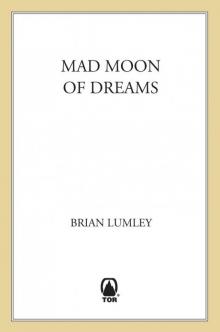 Mad Moon of Dreams
Mad Moon of Dreams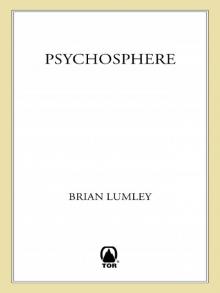 Psychosphere
Psychosphere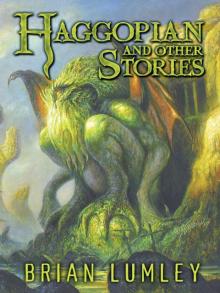 Haggopian and Other Stories
Haggopian and Other Stories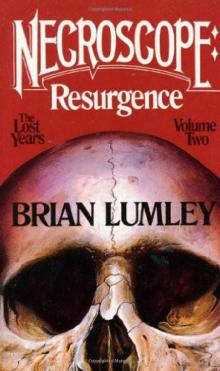 Resurgence_The Lost Years_Volume Two
Resurgence_The Lost Years_Volume Two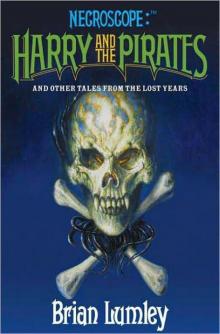 Necroscope: Harry and the Pirates: And Other Tales From the Lost Years
Necroscope: Harry and the Pirates: And Other Tales From the Lost Years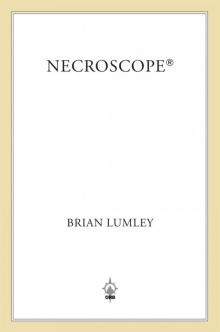 Necroscope®
Necroscope® Dreamlands 5: Questers for Kuranes: Two Tales of Hero and Eldin
Dreamlands 5: Questers for Kuranes: Two Tales of Hero and Eldin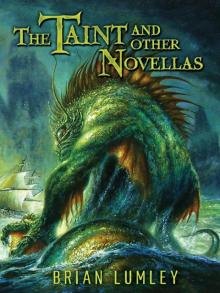 The Taint and Other Novellas: Best Mythos Tales Volume 1
The Taint and Other Novellas: Best Mythos Tales Volume 1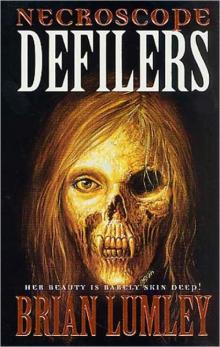 Necroscope: Defilers
Necroscope: Defilers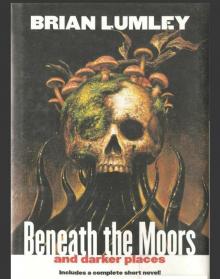 Beneath the Moors and Darker Places
Beneath the Moors and Darker Places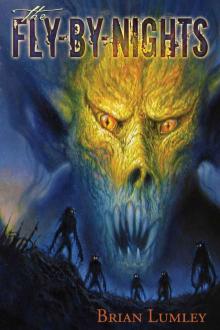 The Fly-By-Nights
The Fly-By-Nights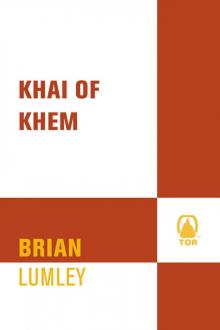 Khai of Khem
Khai of Khem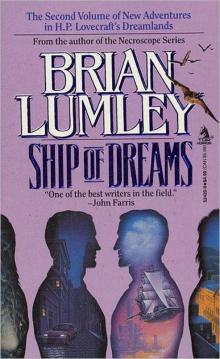 Ship of Dreams
Ship of Dreams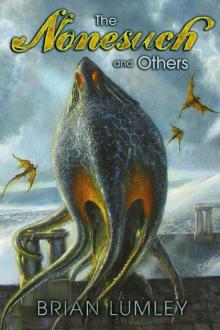 The Nonesuch and Others
The Nonesuch and Others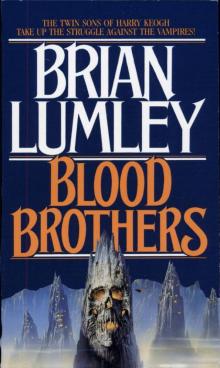 Blood Brothers
Blood Brothers Necroscope
Necroscope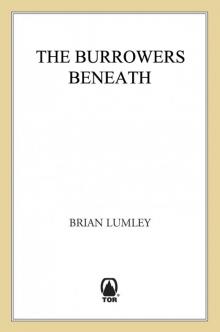 The Burrowers Beneath
The Burrowers Beneath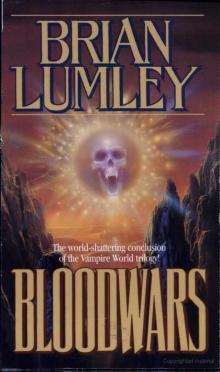 Bloodwars
Bloodwars No Sharks in the Med and Other Stories
No Sharks in the Med and Other Stories The House of Doors - 01
The House of Doors - 01 Screaming Science Fiction
Screaming Science Fiction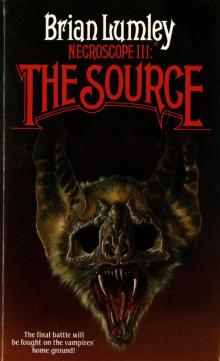 Necroscope III: The Source
Necroscope III: The Source Vampire World I: Blood Brothers
Vampire World I: Blood Brothers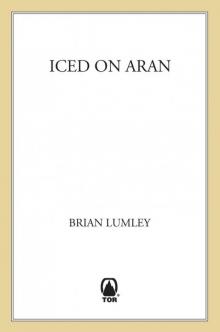 Iced on Aran
Iced on Aran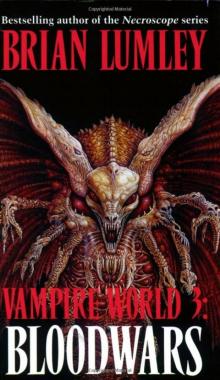 Necroscope: Invaders
Necroscope: Invaders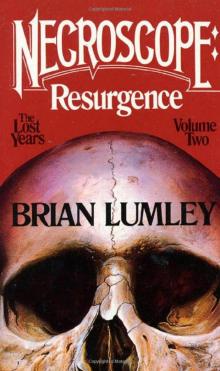 Necroscope: The Lost Years
Necroscope: The Lost Years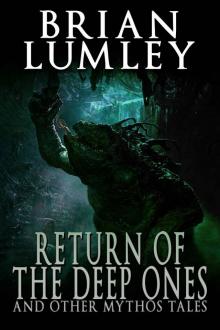 Return of the Deep Ones: And Other Mythos Tales
Return of the Deep Ones: And Other Mythos Tales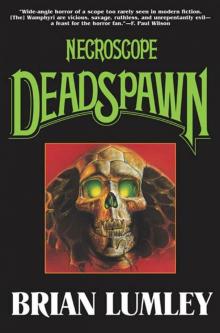 Necroscope V: Deadspawn
Necroscope V: Deadspawn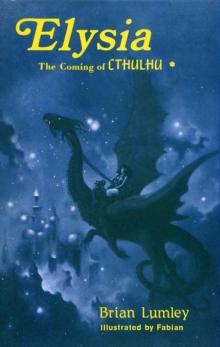 Titus Crow, Volume 3: In the Moons of Borea, Elysia
Titus Crow, Volume 3: In the Moons of Borea, Elysia Hero of Dreams
Hero of Dreams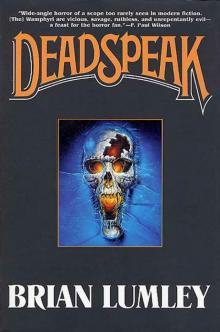 Necroscope IV: Deadspeak
Necroscope IV: Deadspeak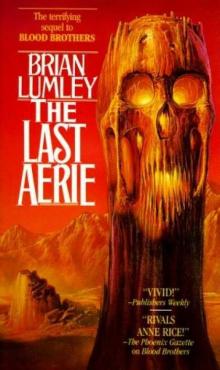 The Last Aerie
The Last Aerie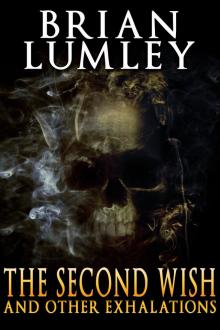 The Second Wish and Other Exhalations
The Second Wish and Other Exhalations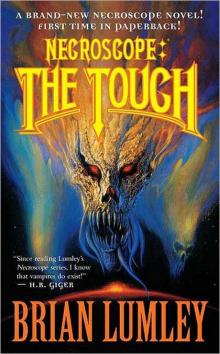 Necroscope: The Touch
Necroscope: The Touch Necroscope: The Plague-Bearer
Necroscope: The Plague-Bearer Necroscope: Avengers
Necroscope: Avengers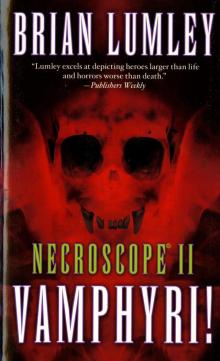 Necroscope II: Wamphyri
Necroscope II: Wamphyri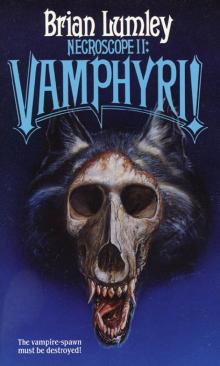 Necroscope II_Vamphyri!
Necroscope II_Vamphyri! A Coven of Vampires
A Coven of Vampires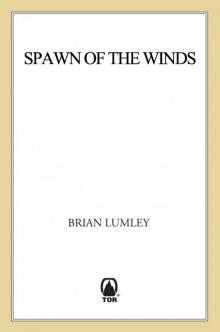 Spawn of the Winds
Spawn of the Winds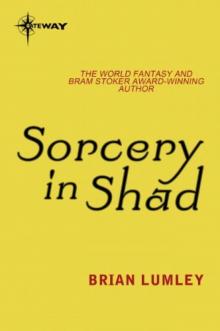 Sorcery in Shad
Sorcery in Shad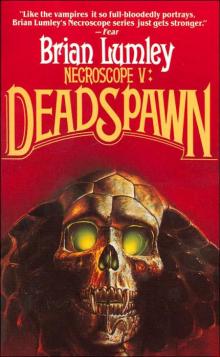 Deadspawn
Deadspawn Necroscope V: Deadspawn n-5
Necroscope V: Deadspawn n-5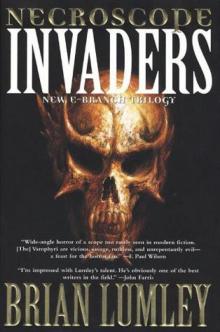 Necroscope: Invaders e-1
Necroscope: Invaders e-1![Beneath the Moors and Darker Places [SSC] Read online](http://i1.bookreadfree.com/i/03/20/beneath_the_moors_and_darker_places_ssc_preview.jpg) Beneath the Moors and Darker Places [SSC]
Beneath the Moors and Darker Places [SSC]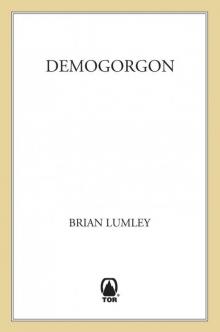 Demogorgon
Demogorgon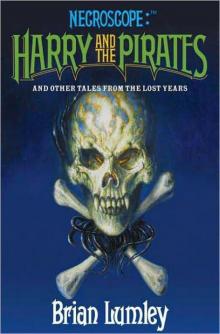 Harry and the Pirates_and Other Tales from the Lost Years
Harry and the Pirates_and Other Tales from the Lost Years Necroscope IV: Deadspeak n-4
Necroscope IV: Deadspeak n-4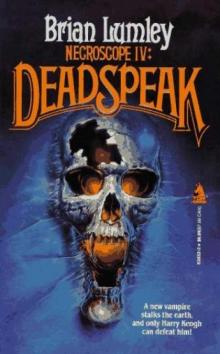 Deadspeak
Deadspeak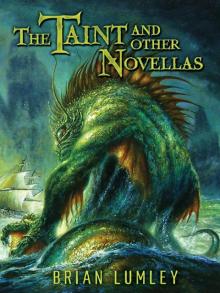 The Taint and Other Novellas
The Taint and Other Novellas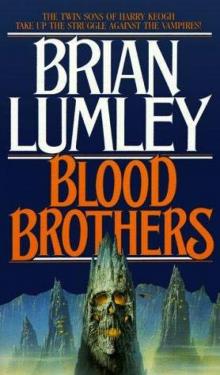 Blood Brothers vw-1
Blood Brothers vw-1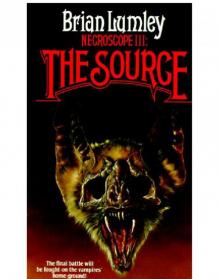 The Source n-3
The Source n-3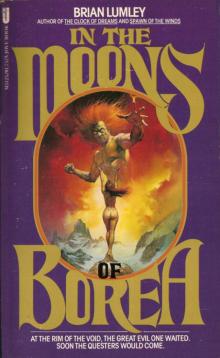 In the Moons of Borea
In the Moons of Borea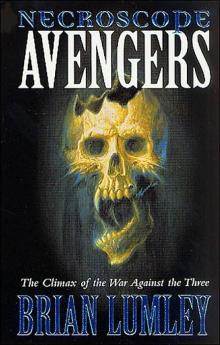 Avengers
Avengers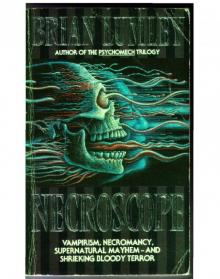 Necroscope n-1
Necroscope n-1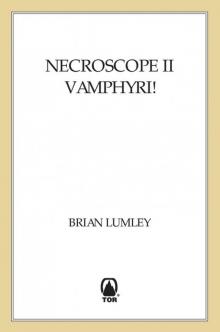 Vamphyri!
Vamphyri!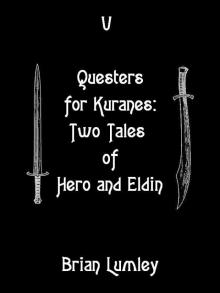 Questers for Kuranes: Two Tales of Hero and Eldin
Questers for Kuranes: Two Tales of Hero and Eldin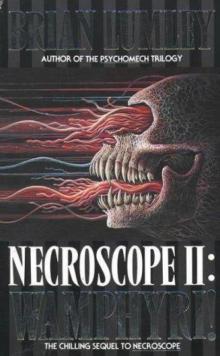 Necroscope II: Wamphyri! n-2
Necroscope II: Wamphyri! n-2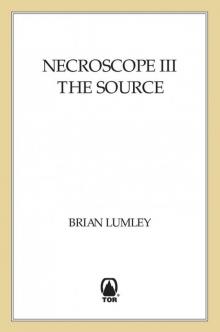 The Source
The Source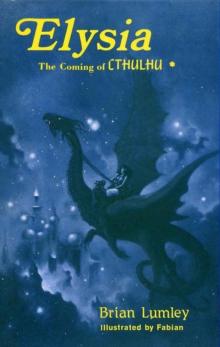 Elysia
Elysia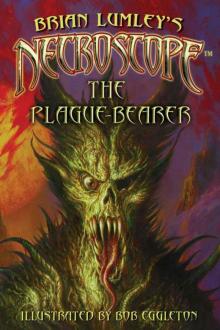 The Plague-Bearer
The Plague-Bearer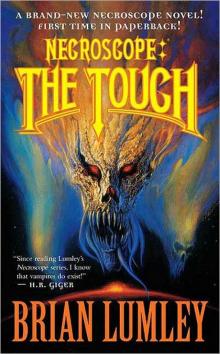 The Touch
The Touch Invaders
Invaders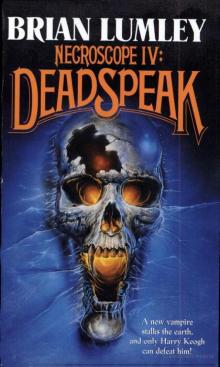 Necroscope 4: Deadspeak
Necroscope 4: Deadspeak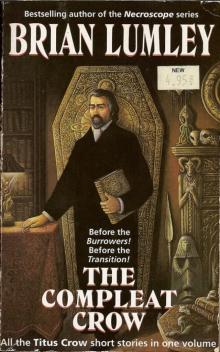 Compleat Crow
Compleat Crow The Mobius Murders
The Mobius Murders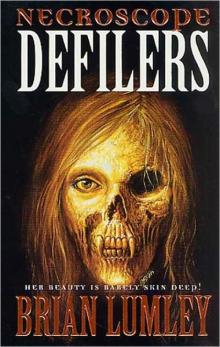 Defilers
Defilers